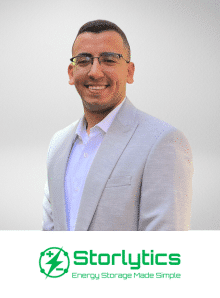
Moemen Yassin
Energy Storage Engineer

Adam Nygaard
Director of Business Development

Sherif Abdelrazek
Director, Renewables Engineering - Energy Storage & Microgrids

Belén Gallego
CEO [Moderator]

June 15th at 7:00 PT / 10:00 ET / 16:00 CEST (Check your local time here)

Energy Storage Engineer

Director of Business Development

Director, Renewables Engineering - Energy Storage & Microgrids

CEO [Moderator]
Today, the development process for grid-tied battery systems faces many challenges. One of the most prominent challenges (and most financially impactful) is the inability of developers to accurately estimate battery degradation during the design phase of projects (well before procurement). But why is this important? Well, battery cells are not cheap! They make up more than 50% of total project cost. So underestimating (or overestimating) degradation can make or break a project. Further, poor degradation estimation capabilities prevent developers from optimizing technology selection and project capacity for their specific use-case. This not only leads to suboptimal designs, but additionally, heavily oversized ones. This is because engineers and developers, in general, find comfort in conservatism in the face of degradation uncertainty. As a result, they overestimate projects’ required battery beginning of life capacity, or augmentation requirements. Which, in turn, leads to suboptimal project returns at best, or losing bid events at worst!
In this workshop we will design a “Winning Energy Storage Project” from start to finish! We’ll go in detail over design steps that must take place to:
Speakers
1. Energy storage opportunity in the US analyses and forecasts
According to Bloomberg NEF, 4.2GW of battery storage capacity was added to the US grid in 2021, compared to a total installed capacity of storage of 27GW. Explosive growth is expected in the next years, at the utility scale level as well as in commercial and residential projects. In this session we look at forecasts of growth of services and geographies considering grid requirements and mapping out of opportunities across both geographically and in terms of timelines.
• Map the opportunities for rapid energy storage project deployment across US states and ISOs to focus on developing projects where the business case is more immediate
• Analyze the most profitable grid services you can deliver and how they will evolve for the next decade, so you can adapt to a changing market
• Understand how the loss on spinning reserves and baseload power over time will shift the requirements of storage technology from short term grid service to longer duration and seasonal storage
• Plan the strategy of your energy storage business for an increasingly decarbonized grid across the country with specific technologies and services as required
• Consider the opportunities for your business that the new storage objectives in Michigan bring forward
2. Focus on the technology: designing, building and operating profitable utility scale energy hybrid solar or wind + battery or stand alone
In the context of higher battery costs and higher competition, it is essential to optimize all the design, build and operation of each of your projects to ensure competitiveness and
maximum returns going forward. In this session we explore how to maximize each dollar invested in your project for maximum return.
• Modelling and designing your project with different duration batteries from 1 to 4+ hours for maximum returns in a changing market
• Hear how to produce, build and commission hybrid projects on time, overcoming high prices of equipment and materials and logistical challenges
• Understand the importance of Energy Management System (EMS) to maximize revenue in a constantly evolving marketplace of services and changing prices
• Prepare for safety of your Li-Ion batteries from the designing stage of your project
3. Focus on the services! New revenue streams and innovative business models for Li-Ion battery projects
The US energy storage market is at the global forefront and therefore implementing new revenue streams and business models is at the core of maximizing returns as the needs in the grid change. In this session we explore innovative business models and new revenue streams and the technologies that underpin revenue growth for energy storage.
• Hear case studies of novel business models and revenue streams that are making new projects profitable across the US
• Understand the new innovative business models with new revenue streams that will become mainstream in the next couple of years
• Study how technology innovation, coupled with longer duration batteries will provide adaptability to a changing grid over the next 5 years
4. The role of long duration energy storage and spinning reserves keeping the grid stable
Whilst it is undeniable that over the next few years Li-Ion will be the main deployed technology, technical limitations mean that long duration and seasonal storage will over time gain central stage in storage development until 2050. Understanding the evolution of market structure & pricing for the development of this technologies is critical as ISOs don´t currently compensate LDES adequately.
The term long duration technologies refers to a variety of technologies with duration capabilities ranging from 4-6h+, to several days and stational storage. In this session we analyze the available technologies, their cost and capabilities in detail, and we match them up with grid needs in the US market.
• Understand how the increasing loss of spinning reserves, baseload power and grid inertia will have to be managed over time by LDEs that can help the grid manage the variability of solar PV and wind
• Hear about long duration and seasonal technologies and each of their capabilities and cost-opportunity
• Consider commissioning times and milestones of LDEs as well as prices and value to the grid to add longer duration projects to your portfolio4
However, traditional PPAs – 20 year fixed price – are quickly disappearing as inflation, supply chains and resource availability are making them unprofitable. At the same time as the technology risk is lowered, access to finance sources is opening up.
• Negotiating corporate PPAs
• Virtual power plants (digital twins?)
• ITCs, grants and other investment and finance considerations
• Merchant project financing
• Bankability of projects and portfolios

Research Engineer
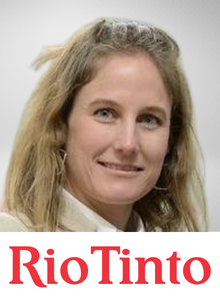
Chief Advisor

Managing Director
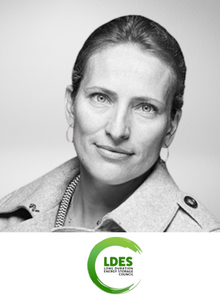
Executive Director

Head of Research, USA
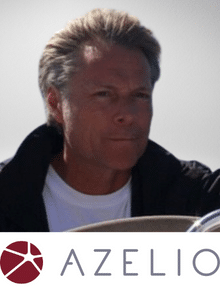
Senior Business Development Manager

Senior Consultant

Senior Director Storage Solutions
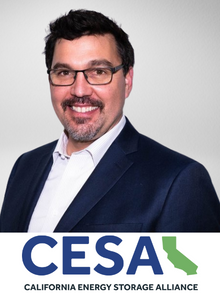
Executive Director

Head of ATA Storage

Senior Manager, New Business Development

Renewables Engineering Manager, ES & Microgrids

Business Development Manager, Energy Storage & Optimization

Senior Scientific Engineering Associate
June 7 at 9:00 PDT / 12:00 EDT / 18:00 CEST
